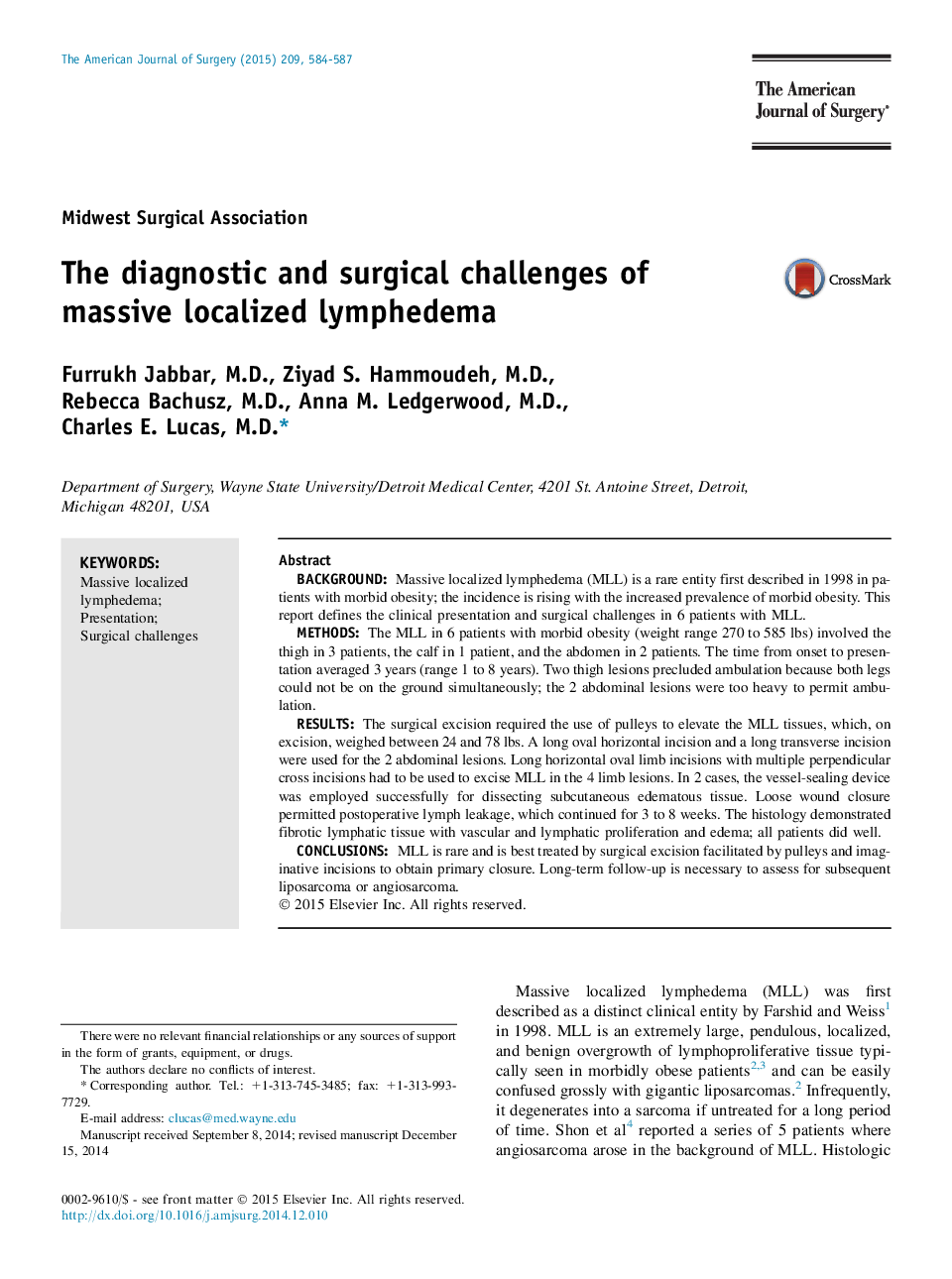| Article ID | Journal | Published Year | Pages | File Type |
|---|---|---|---|---|
| 4278490 | The American Journal of Surgery | 2015 | 4 Pages |
•Massive localized lymphedema is a rare and benign condition seen in morbidly obese patients.•Massive localized lymphedema typically has large size and weight. It is localized and composed of lymphoproliferative tissue that appears similar to a sarcoma grossly.•Conservative treatment with compression techniques is mostly unsuccessful.•Indications for surgical excision are massive size prevents ambulation, recurrent skin infections, and inability to exclude sarcoma.•Pulley-based system to lift the heavy tissue and vessel-sealing device is very helpful in surgical resection
BackgroundMassive localized lymphedema (MLL) is a rare entity first described in 1998 in patients with morbid obesity; the incidence is rising with the increased prevalence of morbid obesity. This report defines the clinical presentation and surgical challenges in 6 patients with MLL.MethodsThe MLL in 6 patients with morbid obesity (weight range 270 to 585 lbs) involved the thigh in 3 patients, the calf in 1 patient, and the abdomen in 2 patients. The time from onset to presentation averaged 3 years (range 1 to 8 years). Two thigh lesions precluded ambulation because both legs could not be on the ground simultaneously; the 2 abdominal lesions were too heavy to permit ambulation.ResultsThe surgical excision required the use of pulleys to elevate the MLL tissues, which, on excision, weighed between 24 and 78 lbs. A long oval horizontal incision and a long transverse incision were used for the 2 abdominal lesions. Long horizontal oval limb incisions with multiple perpendicular cross incisions had to be used to excise MLL in the 4 limb lesions. In 2 cases, the vessel-sealing device was employed successfully for dissecting subcutaneous edematous tissue. Loose wound closure permitted postoperative lymph leakage, which continued for 3 to 8 weeks. The histology demonstrated fibrotic lymphatic tissue with vascular and lymphatic proliferation and edema; all patients did well.ConclusionsMLL is rare and is best treated by surgical excision facilitated by pulleys and imaginative incisions to obtain primary closure. Long-term follow-up is necessary to assess for subsequent liposarcoma or angiosarcoma.
